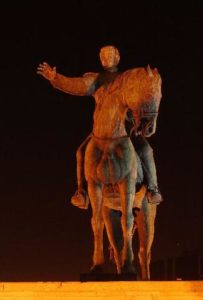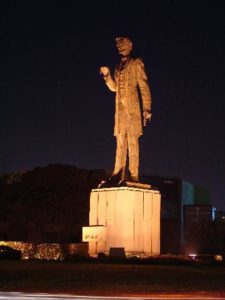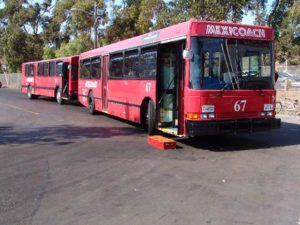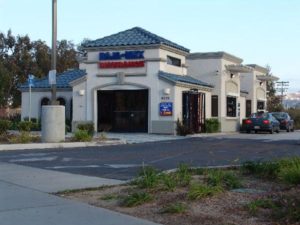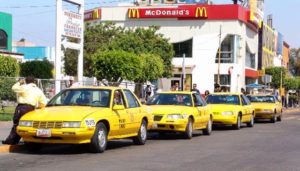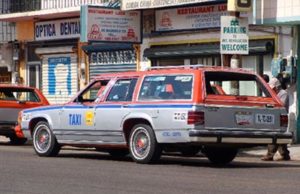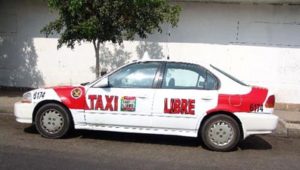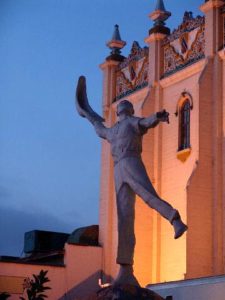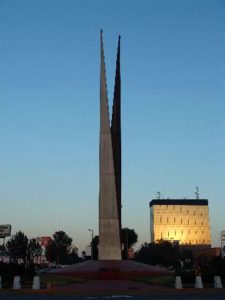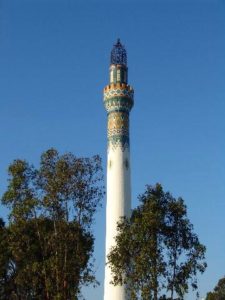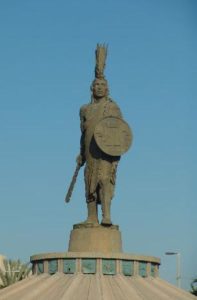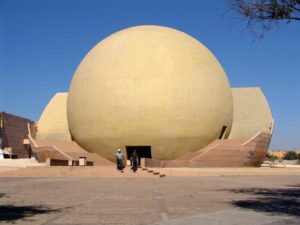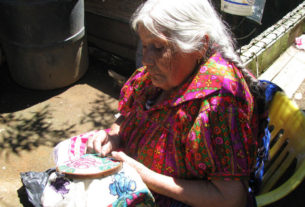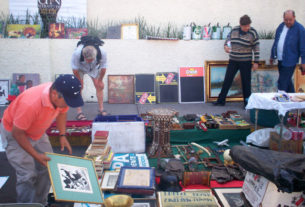Tijuana: A Taste of Mexico Part I:
While white sand beaches and lobster by candlelight are part of a typical vacation for many tourists, I’ve never been much interested in the overpriced and frankly elitist form of pastime that this sort of vacation offers. I’m more of a working stiff who likes to wander the streets and meet the people in the middle-class joints.
Nor do prepackaged tours interest me much – being trapped in a coach or minivan with a bunch of people I have little in common with and wouldn’t socialise with at home. I go to a foreign country to meet other types of people, to have a different kind of experience, not one mediated by the presence of a crowd of Americans (especially when they exhibit what I consider ignorance and prejudice of the average tourist). I know that I’m revealing a prejudice of my own, but I’m only human.
When traveling, I want to come into contact with real people living real lives; I want to find out how life proceeds “at street level,” not on the 5th floor of a luxury hotel or from the upper deck of an air-conditioned tourist bus. I don’t want my vacation pre-packaged, sanitised or hermetically sealed. I’m thirsty for the nitty-gritty, ready for the real deal, hungry for the whole enchilada. Let me walk through crowds and be jostled in markets, where I’ll find exotic fare that’s unfancy and inexpensive, where I can feel the pulse of the country around me and meet the people who make the machine run.
For those who want “a taste of Mexico” and can’t travel farther south or don’t want to commit to a longer stay, visiting a border town is a great option. In fact, if you are contemplating a long trip to Mexico or Latin America, I recommend a two or three day visit to a border town first. This will allow you to discover whether you are ready for a longer trip. You will be able to practice your Spanish and find out how much at ease you are with the country and its people. Pack as you normally would so you know what it’s like lugging those bags on and off buses. You’ll be surprised how much you’ll learn in those two days – and how much stuff you’ll be willing to leave at home next time.
Of all the towns along the 1,400-mile-long border between the US and Mexico, Tijuana offers the perfect opportunity to ” mojar sus pies” – get your feet wet. It’s the most logical place for such a trip if you live in California or Arizona. Tijuana boasts a bullfight ring, racetracks for both dogs and horses, a jai alai fronton, golf courses, museums and cultural centers, a beautiful beach nearby, and other attractions not found in other border towns.
Tijuana can be the perfect budget town, too, provided you stay away from the common tourist traps and remain reasonably cautious. It’s close to Rosarito Beach, where you will also find bargains on rooms and restaurants. But you can save even more money by staying in Tijuana and traveling to the beach, if you don’t mind the short travel – a 10-minute cab ride there will cost only a couple of dollars.
In fact, a cab to just about anywhere in town is under $5, and you can eat really well for $15 to $20 a day. If you want to dine like royalty, just double that figure. An American style hotel will run about $40, but you can get a comfortable room with TV for about 20 bucks.
Many people complain that Tijuana is poor and unlovely, and that Mexico’s fluctuating economy has left it with unfinished streets, urban sprawl and some citizens living in extreme poverty. Indeed, there are many dirt streets in some outlying areas and, as in any developing nation, there are people living in poverty. But while Tijuana has all the limitations of border towns everywhere, there is much beauty to be found. There are grand buildings and public monuments, museums and churches to see and admire. Most important, there are the people, who represent the true beauty of Mexico. A traveler who chooses to go from golf course to golf course, from luxury hotel to luxury hotel can completely miss the local color, the warmth of the people, and the reality of the land through which he or she passes.
Vistas de Tijuana
Avenida Revolución is the main tourist spot of Tijuana. I recommend a quick ride down this famous street, just to see it. But do not linger here – you will be wasting valuable time. At the north end of Revolución you can listen to mariachi music in the Plaza Santa Cecilia (Tijuana’s oldest street, Boulevard Arguello) and walk around El Arco Reloj Monumental, the gigantic metal arch that is the bright symbol of modern Tijuana. Additionally, you can see Tijuana’s oldest church, the Cathedral de Nuestra Señora de Guadalupe, as well as the HSBC Bank building, one of the oldest buildings in the city.
At the south end of Avenida Revolución is the Torre de Tijuana, a striking tower built in 1928 as the landmark edifice for the Aguas Calientes Casino and Spa. In the late 1920s, successful folks from California discovered “the waters” and a spa was born at Aguas Calientes (hot waters). Soon investors were pumping money into the area to build a gorgeous complex for everyone from politicians to Hollywood stars. Limousines lined up to cross the border, and Bing Crosby was just one of many actors who kept their racehorses in Mexico. The legendary Seabiscuit was discovered at the Aguas Calientes racetrack.
If you are going from one end of Revolución to the other, you can stop to view the magnificence of the old jai alai fronton at the center of Revolución. Perhaps you’ll want to go inside to watch players practice and soak up some history from some of Tijuana’s later glory days in the 1950s, when Caesar’s Grand Hotel ruled in “the most popular street in Tijuana.” Named for the Mexican Revolution in which General Emiliano Zapata and his Dorados (Golden Boys) distinguished themselves, Revolución has now fallen on hard times. It’s a sad image of its former self, and one can only hope that it is rebuilt with some class and elegance to recapture some of its glory.
From Revolución, a short cab ride will take you to Zona Río, where you will find the spherical art deco building of El Centro Cultural Tijuana, one of the most important cultural centers in the whole country. El Centro Cultural contains a concert hall where some of the world’s most famous artists perform, as well as an Omnimax theater showing Spanish cultural films, and El Museo de las Californias, a museum dedicated to the history of the Californias from Sacramento to the southern tip of Baja. Along Paseo de los Héroes there is a series of wide roundabouts, each presenting at its center a heroic statue: the Independence “Needles,” Chief Cuauhtemoc (Montezuma), Abraham Lincoln holding the broken chains of slavery, and General Zaragoza on horseback. At the end of Paseo de los Héroes is the beautiful tile-work of El Torre Minarete, a true Moorish minaret covered in white tile with blue and green designs.
If you are a true traveler – one who goes to learn and connect with people – you will find much to love about Mexico and about Tijuana. Baja California’s biggest city, it is a center of commerce and tourism, and can teach you much about the country and its people. I hope you find whatever you’re looking for when you travel there.
Getting There
Getting there is a good place to start planning your trip. You can of course drive into Mexico, but the cost of insurance and the parking might make this unattractive. Or you can park your car in one of the very safe 24-hour lots with full lighting and video cameras. One of them even has a terminal for the Mexicoach, the big red bus that will take you to Avenida Revolución and 7th (the heart of Tijuana’s tourist district) and back out again. The tourist bus, which travels about every 20 minutes until 9 p.m., has two great advantages that make it worth the $5 round-trip fare: you don’t have to take the long and tiring walk through the concrete maze at the border, and they take you through the express lane at U.S. Customs for re-entry to the U.S.
If you come from San Diego or fly to the airport there, you can always take the San Diego Trolley straight to San Ysidro for a couple of bucks. It is a ride of about 40 minutes, and you can read on the way. I have taken the trolley after flying into San Diego or taking the train from Los Angeles, and I always enjoy the trip: it’s much more like traveling than flying from one city to another.
When I travel by trolley, I always get off at Stop # 6 (free re-entry to the trolley with your ticket or transfer pass within 1 hour) and get a headstart on good Mexican food. My friends think I am crazy, but I go to Tacos Armando, a taqueria in a little shopping center on Palm Avenue, just ¼ block from the trolley stop. There, you’ll get two gigantic hardshell chicken tacos for just 4 bucks – and these are what I consider “classic” tacos, as they remind me of the tacos I got as a kid growing up in the San Fernando Valley. I enjoy a couple of great tacos, practice my limited Spanish with the counterman, then get right back on the trolley to la frontera (the border – it helps to have a few words memorised). Once there, I look for the Big Red Mexicoach bus and head into Tijuana.
Sometimes I change my habit and drive into Tijuana – usually if I am going to visit friends in Rosarito or Ensenada (50 miles farther south), or if I am having bodywork done to my car. If that is the case, I stop at one of the Mexican Insurance kiosks at the Via San Ysidro exit – the second exit before the border crossing. The policy is a very reasonable $12 per day. You’ll want to do this if you are driving – it is illegal to drive in Mexico without insurance, and payment for damage is payable on demand. Your U.S. insurance is not acceptable, and you could wind up in jail without Mexican insurance. Things will go much more smoothly for you if you have insurance in case of an accident, and the cost is really minimal.
Getting Around
When I travel, I collect maps – big ones, little ones. Sometimes, when I find a good map, I’ll get several copies, then I’ll cut them up. Nothing is worse than standing on a corner broadcasting that you’re a tourist by your inability to refold a huge map in the wind. I carry a handy business-card wallet with all my contacts in it, so I’ll cut up a small map into a couple of pages, which I then put into the card case. While on the street, I appear to be reading my personal phone book, not am trying to find my way back to the hotel.
Get a map, as soon as you get to town. You can always find a map at the bus or train terminal, or at the tourist office. In fact, get every map you can – they will come in handy later. Take your map to a cafe and spend some time relaxing over it. Find landmarks on the map and orient yourself – then get out and start walking.
Walking is fun and healthy, and there is much to see in Tijuana. There is something novel around every corner, and some streets are wide and tree-lined. Most neighborhoods are safe, even for tourists. But be smart – stay in groups (especially women), don’t wear a lot of jewelry, and don’t flash your money around. And be careful – travel in groups, stay in populated areas, don’t go down dark alleys, and don’t get into cars with strangers. A little common sense goes a long way. As my Granddaddy always said, “You can’t stay safe if you act stupid.”
A short detour: Ladies, don’t wear suggestive or revealing clothing (including sleeveless tops). This isn’t the U.S.A., so you should wear sensible clothes, especially in churches. In fact, the issue of clothing is an important one for both genders. I have never worn tank tops or tee-shirts, especially tee-shirts with messages on them. When I travel, I dress conservatively, and my style of dress does not usually mark me as a tourist. I don’t wear shorts (except at the beach), I don’t wear hiking boots or athletic shoes, and I don’t wear sun visors or baseballs caps. As a result, I don’t look like the average American ( norteamericano to los Mexicanos) and so I am rarely treated like a tourist. In fact, in several countries in Central America I have been taken repeatedly for a local, simply because of my clothing and manners.
If you aren’t sure where you are going, then by all means get a cab. There is no sense in finding yourself lost and tired in a strange town. But once you have traveled in a neighborhood a bit and recognise the landmarks, you can venture out more often and go a bit further each time.
Taxicabs
You’ll tire quickly if you try to walk everywhere. I recommend alternating between walking and taking cabs. The cabs are cheap and plentiful. But you must be careful: there are two kinds of cabs in Tijuana. One is a “flat-rate” cab, and you will pay the full price if you want to ride in it alone. These are usually station wagons, and they may be all white, all red, cream ans blue, silver and red, yellow and cream, or other colors. They are marked clearly ” grupo,” ” sitio” or ” exclusivo.” They can hold up to nine people, including the jump seat in the back. You will see them lined up at certain stops around the city, usually with the back door open and people waiting inside. When the cab fills, the driver takes off and drops people along a set route to another destination. (In Turkey, they call this kind of conveyance a ” dolma” – “stuffed” or “packed” – but they are minibuses, as they are elsewhere in the world.) Don’t take this kind of cab thinking you will have it to yourself – the cabbie won’t understand and will fight with you, and you’ll wind up paying the entire fare, perhaps as much as $15.
The other kind of cab is the yellow or “standard” cab – mostly small sedans. These cabs can be paid by the meter or they might quote you a flat rate if you ask. Usually it is $3 – $5 for most places in one area – say, from the fronton to Revolución, or from Revolución to Zona Rio. Always, always negotiate the price before you get into the cab – and always, always have the cab wait for you at your destination, until you see if your friend is home or if the store is open. It’s no fun to be stuck in a strange neighborhood and have to walk a mile back to a cabstand. If necessary, don’t pay the cabbie until you find out that you won’t be abandoned on foot.
If you’re adventurous, you might want to try getting around by bus. Be careful here too – unless your Spanish is really good, you might misunderstand and wind up in a neighborhood far far away. On first hitting a strange town, I often like to take the first bus that comes by. I will ride it to the end of the line, noting in my book the landmarks and the number of the bus. At the terminus, I will grab the next bus and do the same thing. This technique worked pretty well for me in Mazatlán, but not quite so well in San Jose, Costa Rica.
This isn’t something that you should start in the afternoon – you could be doing it long after dark. But if you start in the morning, by mid-afternoon you might be recognising some landmarks you’ve seen before and have a pretty good idea of the layout of the town. You probably won’t need the buses much in Tijuana, since Zona Centro is small enough to walk all over in a couple hours and cabs can take you everywhere else you might want to go. The only place you might need the bus is to go out Agua Caliente, or to Rosarito, though the cabs are so cheap that you might not even think of waiting for a bus.
Cartographer’s note: Tijuana’s numbered calles run from 1st ( primera) to 11th ( oncena), and they also have names.
- 1st (primera) = Calle Artículo 123
- 2nd (secunda) = Calle Benito Juarez
- 3rd (tercera) = Calle Carrillo Puerto
- 4th (cuarta) = Calle Díaz Mirón
- 5th (quinta) = Calle Emiliano Zapata
- 6th (sexta) = Calle Flores Magón
- 7th (septima) = Calle Galeano
- 8th (ochava*) = Calle Miguel Hidalgo (*or octava)
- 9th (nona*) = Calle Zaragoza (*or novena)
- 10th (decima) = Calle Juan Sarabia
- 11th (oncena*) = Calle Elias Gallegas(*or undécima)
Once you recognize street names and other easy terms, you will be more ready to start exploring the town, finding minor adventure and real treasures in a place filled with new sights and wonders.

